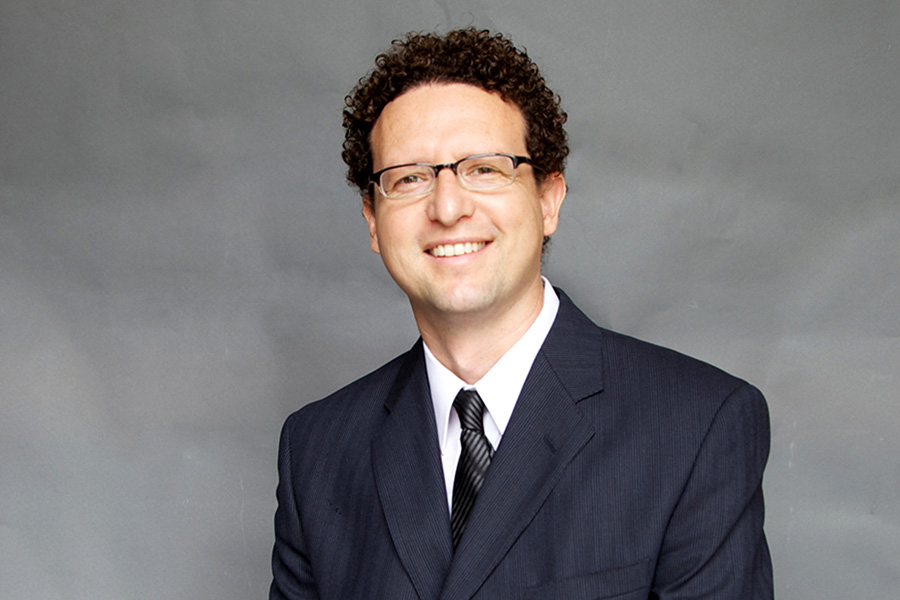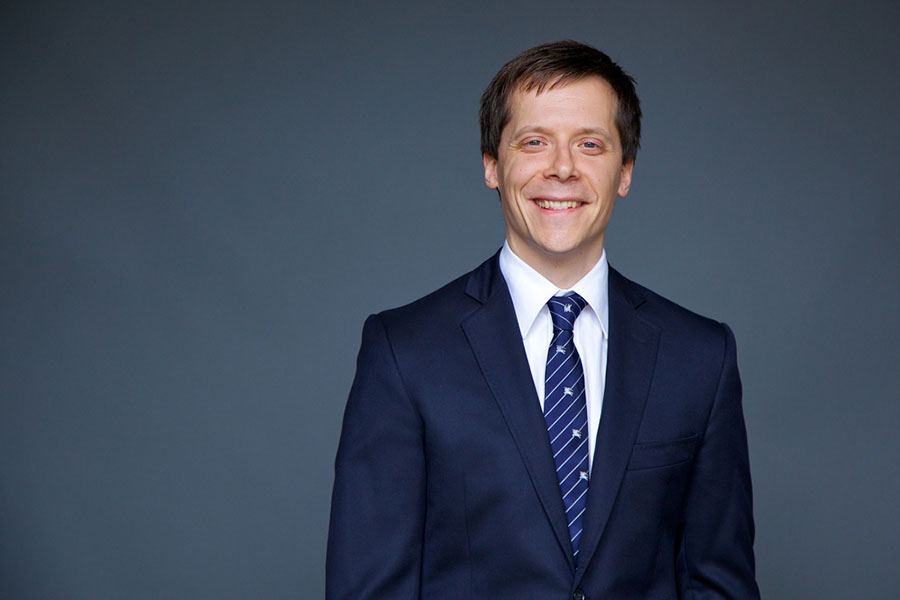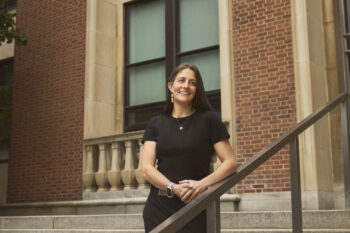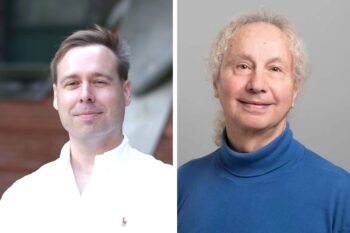Six U of T Engineering researchers have received Connaught Innovation Awards to advance their promising technologies. Projects include the development of smart ‘finger pads’ for robotic grippers, the next generation of high-colour OLED screens, and an uncrackable algorithm to keep private data safe.
They are among 10 recipients from across U of T this year, sharing up to $500,000 in support of research that has socio-economic and commercial potential.
“We are proud of the cutting-edge research carried out at U of T Engineering and congratulate all the recipients of the Connaught Innovation Award,” says Ramin Farnood, Vice Dean of Research at U of T Engineering. “In an evolving global marketplace, industry leaders continue to embrace the ingenuity we offer, as we work to develop solutions and maximize our impact on society.”
The recipients are:

Timothy Bender: Next-generation materials for brighter, more flexible displays
Organic light-emitting diodes (OLEDs) are a group of chemicals that emit light upon stimulation with electricity. They lie at the heart of next-generation visual displays, and can be found in everything from smartphones to flat-screen TVs.
Professor Tim Bender (ChemE) and his team have partnered with U of T Engineering spinoff company Amber Molecular to commercialize a new and unique set of OLED materials.
The unusual chemical structure of the new compounds grants them a rare combination of electro-optical properties. They are valuable for their high-colour purity, highly efficient energy transfer, and high chemical stability.
Bender and his team have also demonstrated that their electrical properties can be carefully controlled through the addition of substituent chemical groups.
“These materials could be used as a drop-in solution in combination with existing OLEDs to enable richer colours in screens of all kinds,” says Bender.

Benjamin Hatton: Robotic grippers inspired by octopus suckers
With inspiration often drawn from biological materials, such as plant leaves, fish scales and insect wings, Professor Benjamin Hatton (MSE) and his team are interested in developing new materials with unique surfaces that can actively change their properties in response to stimuli.
His fascination with the ability of an octopus to regulate the grip of its tentacles inspired the invention of smart pads that can be digitally controlled for dynamic adhesion. The researchers are able to move microscale surface features on the small pad to mimic the on-off adhesion of individual octopus suckers.
“We are hoping the smart ‘finger pads’ can help robotic grippers grasp more efficiently,” says Hatton. “Current gripper designs, such as prosthetic hands, have limited control at the material surface, which generally leads to objects slipping or being crushed.”
Hatton and his team plan to use these smart pads to increase sensitivity and dynamic control of robotic grippers. Connaught Innovation Award funding will allow his team to integrate their work into technological applications within industry, and on a larger scale.
“We appreciate the amazing ability of the human hand to maintain an optimized grip on objects, and constantly change that grip dynamically – all without consciously thinking about it,” says Hatton. “We anticipate this work could improve the designs of prosthetic hands, assistive robotic arms, and surgical robotics.”

Glenn Hibbard: Inventing a sustainable structural material for the circular economy
“We weren’t trying to make just the strongest material, or make it the most light-weight,” says Professor Glenn Hibbard (MSE). “We wanted it to be the greenest structural material we could build, and so sustainability was a part of the design of our material right from the beginning.”
The Hibbard Group has invented a new melt-stretching technique to manufacture thermoplastic sandwich panels — a flexible three-layer material used in a range of industries, including automotive, aerospace, construction and shipping. The new product is called FLYCORE. It is lighter and fully recyclable, unlike current sandwich panels on the market, which are energy intensive to produce and destined for the landfill after one use.
“We simplified the development process from six steps to one and use just a single recyclable material to make the entire panel,” says Hibbard. “The panel can be crushed to collapse and then re-melted and re-stretched without any loss of performance.”
Commercial interest in FLYCORE is picking up in the multi-billion dollar sandwich panel market. Hibbard and his team will use the Connaught Innovation Award funding to transition from testing FLYCORE in the lab to getting it market ready for interested industry partners.

Hoi-Kwong Lo: Future-proofing data breaches for the age of supercomputers
Private data stored behind conventional encryption technologies of today won’t stand a chance against the supercomputers and quantum computers of tomorrow.
“The advancements in computational power threatens the foundation of cybersecurity and our privacy,” says Professor Hoi-Kwong Lo (ECE).
To future-proof data breaches, Lo’s team will use the Connaught Innovation Award funding to develop an algorithm that combines two existing cryptography systems, “secret sharing” and “one-time pad,” to safely store, distribute and exchange private information among any two parties in a network.
This work is another building block in establishing a future quantum Internet — the ‘Holy Grail’ of quantum information processing that would allow the secure transmission of data.
Lo says their cryptography system is guaranteed to be unbreakable, even in the hands of supercomputers. “Our work is of major importance, as data stored or even stolen today, won’t be cracked in the future.”

Molly Shoichet: A biomimicking substance that better treats retinal detachment
Led by postdoctoral fellow Alexander Baker (ChemE PhD 1T9), under the supervision of Professor Molly Shoichet(ChemE, IBBME), Shoichet’s team has invented a biodegradable material that mimics the properties of vitreous, the gel-like substance that fills 75 per cent of the eye, helping to maintain its round shape.
As people age, the consistency of the vitreous, which adheres to the retina, changes. This can lead to the vitreous peeling off and tugging on the retina, creating a tear. Left untreated, the gel substance could leak through the tear and into the space behind the retina, causing detachment and blindness.
Current treatment involves inserting a gas bubble into the eye to keep the retina flat. Following the procedure, patients must lie face-down to maintain head position for several days, which is known as posturing. For complicated detachments, silicone oils are used to repair the detachment.
“Our vitreous replacement hydrogel will neither blur patient vision nor require posturing or a second surgery, as required with oils,” says Shoichet, who is collaborating with vitreoretinal surgeon, Dr. Robert Devenyi.
The Connaught Innovation Award funding will go towards advancing the work of Shoichet’s vitreous substitute. The non-toxic and biocompatible hyaluronan-based hydrogel would be used to flatten the detached retina, with minimal swelling.
“The socio-economic benefit is clear,” she adds. “With our product, patients will be better served, return to work faster, and the cost to the health-care system will be lower.”

Yu Sun: Increasing the supply of hearts for transplant
Around the world, transplantable hearts are in short supply. Patients who need one typically wait weeks or months to receive it. Professor Yu Sun (MIE) and his team, in collaboration with Dr. Mitesh Badiwala of Toronto General Hospital, are creating new instruments that they hope will change that.
“The short supply is exacerbated by the fact that many donor hearts become unusable when they reach the hospital for transplantation,” says Sun. “With an artificial heart perfusion system, we can actually resuscitate a heart that has stopped beating, and potentially render it suitable for transplant.”
But even with a heart perfusion system, it can be hard to assess the condition of the resuscitated heart without invasive techniques that often end up damaging the organ. As a result, the number of resuscitated hearts that actually get transplanted remains low.
Sun and collaborators plan to improve on their current heart perfusion system designs by integrating sensors that measure the pressure and flow of blood in and out of the heart. Data from these sensors can be analyzed using machine learning techniques to provide a real-time, quantitative assessment of the heart’s function.
“With this new capability, we expect to increase the use of donor hearts for transplantation to help overcome the persistent issue of donor organ shortages,” says Sun.



